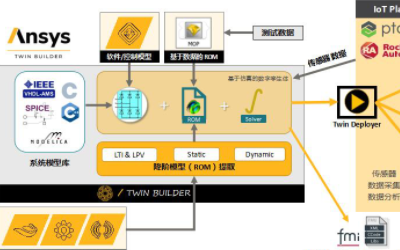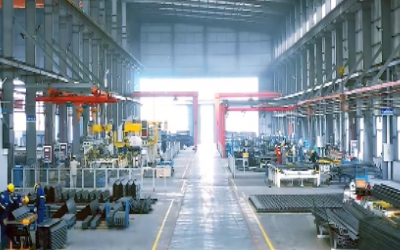Considerations for Sourcing Deep-sea Metals
Deep-sea mining may provide a new source of some metals, but there are concerns for ESG certification to consider before getting involved.
As more people are switching to electric vehicles and the demand for metals increases, many companies may be looking for new supply chain options for metal sourcing. Deep-sea mining (DSM) is an emerging industry that may provide a new source for some metals, particularly for cobalt, manganese, nickel, lithium, and copper. Proponents argue that DSM is appealing because it can relieve pressure from terrestrial mines, multiple minerals can be mined from the same source, and DSM may have lower greenhouse gas emissions than terrestrial mining. However, there is considerable concern that DSM could not be carried out in a way that enables Environmental, Societal, and Governance (ESG) sustainability certification. Here, we review the issues that supply chain manufacturing should consider.
There are many regulations for terrestrial mining but no regulations exist for DSM yet, so we will use the Initiative for Responsible Mining Assurance (IRMA) mining regulations as a reference for talking about DSM. IRMA is not currently allowed to be used for DSM, but it provides a good reference to discuss some of the concerns of DSM. There are, however, some voluntary codes for DSM being discussed like the Code for Environmental Management from the International Marine Minerals Society. IRMA considers three broad categories: Business Integrity; Environmental Responsibility; and Social Responsibility, which includes financial sustainability. In addition to IRMA, we also consider the lens of ESG certification principles, as these are important for industry investment.
Main Issues of Deep-Sea Mining
The IRMA standards for business integrity of a mining operation are that mines are transparent, abide by local laws, involve the community and stakeholders, respect human rights, have a system in place to address issues, and are transparent with their finances. The regulatory body for DSM is the International Seabed Authority (ISA), established by the United Nations Convention on the Law of the Sea. Projects that include stakeholder involvement in decision-making are more likely to be successful in the long term and are more likely to be supported by the public. In this vein, IRMA includes regulations to involve stakeholders from affected communities in all aspects, and the operating company should remove or reduce barriers to stakeholder involvement to the extent possible. For stakeholders to be involved, there needs to be transparency from the regulatory body so stakeholders can make informed decisions. However, numerous issues have been raised regarding the lack of transparency and stakeholder involvement at the ISA in developing regulations and overseeing exploration for mining in international waters. Thus, it is not clear that DSM will be able to meet Governance certification standards.
Environmentally, waste management, noise and vibration, and biodiversity are going to be the biggest concerns for DSM. According to IRMA regulations, mines need to implement best practices for handling and disposal of potentially hazardous materials, and the operating company must implement, monitor, and update waste management plans to prioritize human health, safety, and the environment. These issues will be important for deep-sea mines too, but DSM will likely run into problems with waste discharge that may create toxic chemical plumes in the ocean as well as plumes of sediment disturbed by mining operations. These plumes may result in bioaccumulation of the waste through the food chain which could affect commercial fish stocks and healthy ecosystems in general.
Mining operations tend to be noisy, which is why IRMA has regulations for maximum noise levels and durations of excessive noise to protect human health, the environment, and structural integrity. Marine mammals and other deep-diving species are sensitive to noise since they use sound for communication and navigation, so it is clear that noise regulations will be important for DSM. The noise from one mine can travel over 310 miles, and noise within a 4–6-mile radius of one mining operation can exceed US National Marine Fisheries Services thresholds. This has led to some suggestions that only one or two mining operations run at a time to reduce noise disturbance. Noise disturbance can alter animal life histories, behavior, and even migratory routes. Although not a concern for terrestrial mining, the persistent bright light used in DSM may be environmentally problematic for animals in the ocean and seabirds since light can also alter animal behavior and migratory patterns.
Biodiversity loss is a major concern for DSM because life in the deep sea grows very slowly. The deep sea is a nutrient-poor environment, which causes many animals to grow slowly and have long lifespans. This also means that populations take longer to recover from disturbances. Many animals live on the polymetallic nodules, so when those are taken away during mining, habitats are removed. Fields of polymetallic nodules are slow-changing environments since the nodules grow at a very slow rate of 2-10 millimeters per million years, so mining would cause an uncharacteristic disturbance to the environment.
In terrestrial mines, IRMA states the operating company must establish an understanding of the impacts on or risks to biodiversity from mining, and then carry out an impact assessment for any predicted effects. The impact assessments must include baseline conditions, potentially significant impacts, and options to avoid adverse impacts. However, most of this information is unknown about deep-sea ecosystems as there is little scientific data on how deep-sea ecosystems will react to mining or how long they will take to recover, meaning scientists don’t know how to best avoid or limit biodiversity loss.
A mitigation hierarchy is used in terrestrial mining to prevent harm to the area by prioritizing avoidance of adverse impacts. The hierarchy prioritizes avoidance, then minimization, then restoration, and finally offsetting. So if the first choice is not possible or reasonable, then the next best choice is taken. This mitigation hierarchy is useful for terrestrial ecosystems, but not for deep-sea ecosystems since there is no evidence that restoration or offsetting efforts will work in the deep sea. This leaves avoidance and minimization as the only real “mitigation” tactics available for DSM.
While mining itself can make money by selling minerals, deep-sea mining as a whole may not be financially sustainable because of the impacts on ecosystem services and other industries that rely on healthy marine ecosystems. The U.N. Environment Programme Finance Initiative found that DSM does not fit within the Sustainable Blue Economy, stating that there are “significant challenges to overcome before the deep-sea mining industry is recognized as economically viable or as a responsible industry that can make a positive economic contribution.”
Additionally, there are alternatives to deep-sea minerals resulting in lower demand for new sources of these metals to be mined. Metals can often be recycled or recovered from scraps and recycling metals from batteries is becoming much more effective. Battery recycling will likely become more common globally, especially with electric vehicle batteries, as we move towards a circular economy. Battery innovation also shows the potential to move away from lithium-ion batteries and toward solid-state batteries which do not use nickel or cobalt and are cheaper to produce. Thus, metal alternatives and challenges to economic viability may make Societal Responsibility certification difficult.
Divide Between Environmentalists and the ISA
Many scientists, environmental groups, and companies are calling for a moratorium on DSM due to the lack of information on the potential effects of DSM and that the little information available shows very negative impacts. DSM is assumed by these groups to have severe, long-lasting impacts on the environment affecting fisheries, communities, human health, and the broader marine ecosystem. The socioeconomic impacts are also largely unknown and have big knowledge gaps.
A moratorium would put off international DSM to provide time to gather baseline data the ISA can use for regulations and management plans. That time would also allow scientists to gather data on deep-sea ecosystems to better understand how they might react to DSM and what the scales and ranges of those impacts are likely to be. Since commercial exploitation of DSM has yet to start in international waters, moratorium proponents argue to set sustainable, adaptive regulations from the start that can protect deep-sea ecosystems.
Although there is growing support for a moratorium, the ISA is moving forward with developing regulations that would allow DSM to begin in international waters rather quickly. In 2021, the so-called “two-year rule” of the Convention of the Law of the Sea was triggered which allows a mining plan to be approved with whatever regulations are set by June 2023. So while moratorium proponents argue that there needs to be greater consideration for the precautionary principle, the ISA is also dealing with the possibility of a short deadline for responsible regulations.
Final Thoughts
For companies considering sourcing metals from DSM, there are several concerns to take into consideration. There are concerns about business integrity with the lack of transparency in the industry, a multitude of environmental concerns, financial concerns, and a general lack of knowledge about the deep sea and the effects of DSM. Overall, it will be very difficult for deep-sea mining to reach the standards needed for ESG certification, especially by June 2023 when DSM can commence.
For more information on…
IRMA standards: https://responsiblemining.net/wp-content/uploads/2018/07/IRMA_STANDARD_v.1.0_FINAL_2018-1.pdf
The financial side of DSM: https://www.unepfi.org/wordpress/wp-content/uploads/2022/05/Harmful-Marine-Extractives-Deep-Sea-Mining.pdf
https://www.savethehighseas.org/wp-content/uploads/2022/03/DSCC_FactSheet6_DSM_WhoBenefits_4pp_Feb22.pdf
Environmental impacts of DSM: https://miningwatch.ca/sites/default/files/nodule_mining_in_the_pacific_ocean.pdf
https://www.sciencedirect.com/science/article/pii/S0169534720301828
Why deep-sea ecosystems are important: https://www.ocean-climate.org/wp-content/uploads/2017/03/ecosystem-services-deep-ocean_ScientificNotes_Oct2016_BD_ppp-9.pdf








